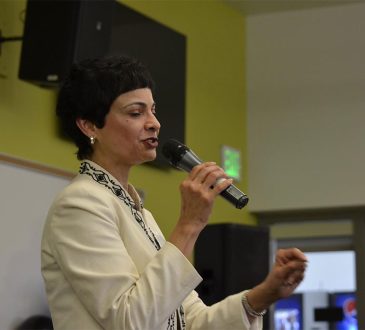Executive Transition – Getting It Right From The Very Beginning

According to the McKinsey research, about half of executive transitions fail! Are you surprised? I am not. I hear a lot about the struggles of emerging executive leaders during my listening tours. You may wonder what causes such a high number of transitions being unsuccessful. It is connected with the fact that very few organizations have found ways to meaningfully support their emerging executives as they transition into these business-critical roles.
In my interviews with executive leaders, I ask them to share their experience of what it was like to shift to a new role. Often the response I hear is that they felt that there was no or little preparation for the role and complexity of the system. It is common that leaders get a deep dive into the role from day one with no defined role clarity and exp
ectations, they have to figure it out by themselves. The perception is that the transition success largely depends on the support system and the network around them. The leaders who were promoted internally struggle to successfully transition, to leave ‘the old’ behind. Often they find the system reinforcing going back and forth the value chain (i.e. perform old role as well and the new one) which prevents them from creating value in the new role.
When asked about a type of support they would have wanted they often mention peer networking opportunities and having a mentor/coach/buddy assigned through the transition period to provide guidance, share experience and examples of what it means to be a successful executive, and provide feedback. Doing it all alone is extremely difficult.
Here are 3 strategies to accelerate the transition:
1) Playing in position
To make a transition successful there is a transformation that needs to happen, a mindset shift. There are things leaders need to say goodbye to in order to embrace fully their new executive role. Being promoted is a recognition of brilliance and yet, most of the things we were brilliant at before we got promoted, we will no longer be doing in our new role. We need to acknowledge and accept it. If we are unclear on the new role or lack confidence in the new space we will be operating at the edge of our old and new role, not playing in position. It will result in exhausting ourselves, compressing the talent below us and creating chaos.
To support the mindset shift and playing in position, think about what you need to:
- Stop doing (let go of)
- Start doing
- Continue doing
- Accept
Discuss your thoughts and help needed with your support group, i.e. mentor, coach, line manager, peer group.
2) Reading and navigating the system
Executive leaders have more to do than they can possible get done. The work becomes much more complex, with higher risk, and a larger span of influence. They are in a world of high complexity and accountability and often feel isolated. And the more turbulent the environment, the greater the experience of overload. The challenge is to be able to see, understand, and master the system they are a part of:
- Map out the system elements to be clear on where the resources, help, barriers and threats are as you transition into your new leadership space. Think about your team, the system artefacts, stakeholders, peer group, influencers, organizational myths, legends and traditions, reinforcement mechanisms, policies and procedures.
- Take others’ context into account. Many of the things that we take personally are not personal at all. Many times we think we are dealing person-to-person when in fact we are dealing with people who are struggling to cope with the nature of the context they are in. Seeing others in context enables us to understand their worlds, empathize with the issues they are dealing with, and, ultimately, interact with them in mutually productive ways and in the service of the system. A good way to do it is to conduct some listening tours to learn about people experiences, stresses, issues, what’s going well and what isn’t.
- Integrate regularly with your peer group. It is a powerful way to read, understand and leverage the system and at the same time it’s a challenging task as the ‘real world’ pulls leaders apart. The process for creating peer partnerships involves moving back and forth between dispersing (leading, planning, creating strategy, influencing, making decisions) and integrating (coming together periodically) to exchange information, align, coordinate the efforts, broaden the perspective, problem solve together, coach and support one another, and share best practices. With certain discipline in place this practice strengthens leaders’ ability to lead and support the organization effectively.
3) Leading with confidence.
Executive leaders are under constant scrutiny and need to maintain a genuine and sustainable executive presence despite the fear and uncertainty. Confidence is one of the critical skills that executive leaders need and the good news is that it can be developed. The key is to regularly exercise your mental muscle — just as you would if you were trying to build physical strength. There are many different exercises to develop and sustain confidence. Here is an example of an exercise that can be conducted individually:
- Define what ‘confidence’ means to you in the current moment in your life
- What is your confidence level on the scale 1 to 10 (1 = very low, 10 = fully confident)?
If it is 9 or 10 – your confidence level is great, keep it up. If it is 8 or less – you may consider enhancing your confidence through eg. mental strength training - Think of situations from your life when you felt confident. Paint the picture of those situations and your state of mind as detailed as you can
- Look for patterns/connection points for those different situations
- Write down how you can use this learning in the future situations when you feel less confident and come back to these notes on regular basis
- Consider building a network of 3 people who demonstrate strong confidence and positive energy. Stay in contact with them and reach out to this resource whenever needed.
The transition to the first executive role is considered to be one of life’s biggest challenges. It is important to get it right from the very beginning to ensure a smooth transition to this important role. Shifting the mindset to play in position, understanding and leveraging the system for productive partnerships and organizational effectiveness as well as strong and confident presence are key to the success of leaders, their teams and the entire organization.
Written by Aleksandra Rutkowska,
Add CEOWORLD magazine to your Google News feed.
Follow CEOWORLD magazine headlines on: Google News, LinkedIn, Twitter, and Facebook.
This report/news/ranking/statistics has been prepared only for general guidance on matters of interest and does not constitute professional advice. You should not act upon the information contained in this publication without obtaining specific professional advice. No representation or warranty (express or implied) is given as to the accuracy or completeness of the information contained in this publication, and, to the extent permitted by law, CEOWORLD magazine does not accept or assume any liability, responsibility or duty of care for any consequences of you or anyone else acting, or refraining to act, in reliance on the information contained in this publication or for any decision based on it.
Copyright 2024 The CEOWORLD magazine. All rights reserved. This material (and any extract from it) must not be copied, redistributed or placed on any website, without CEOWORLD magazine' prior written consent. For media queries, please contact: info@ceoworld.biz
SUBSCRIBE NEWSLETTER









